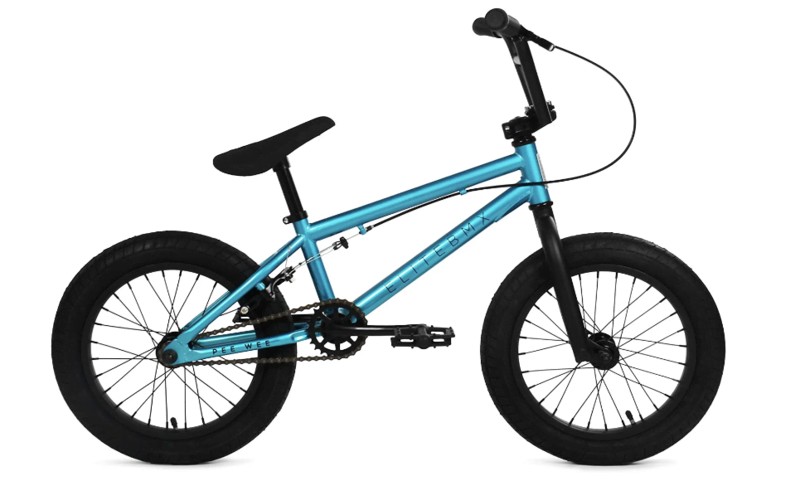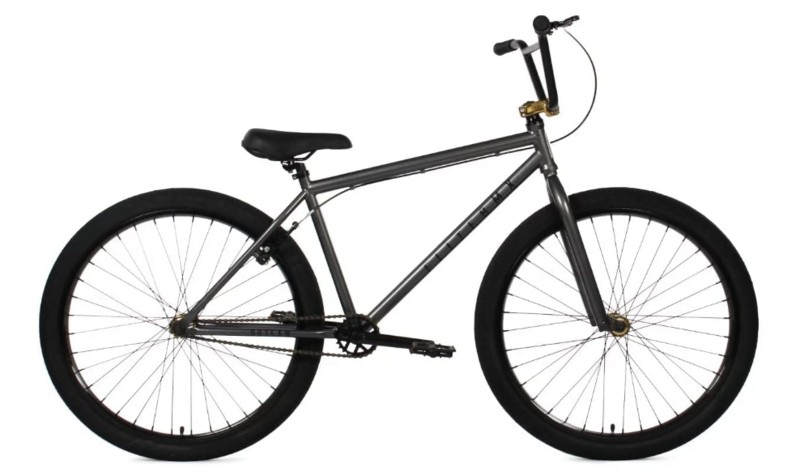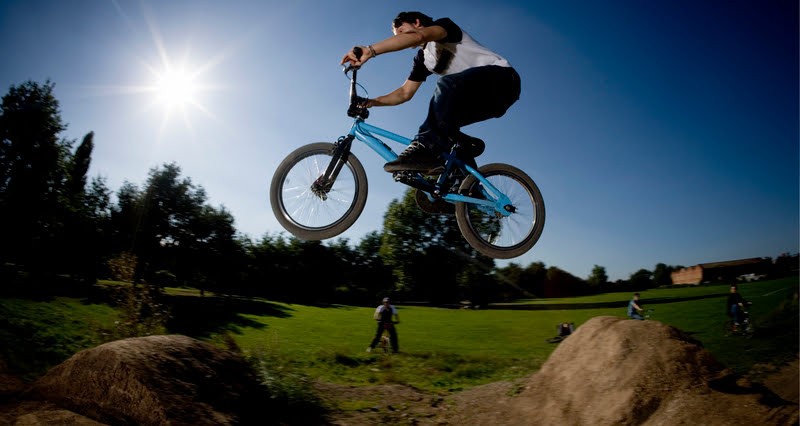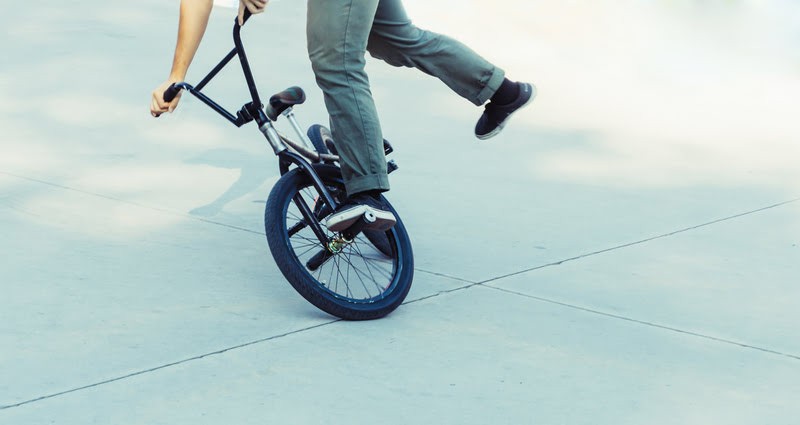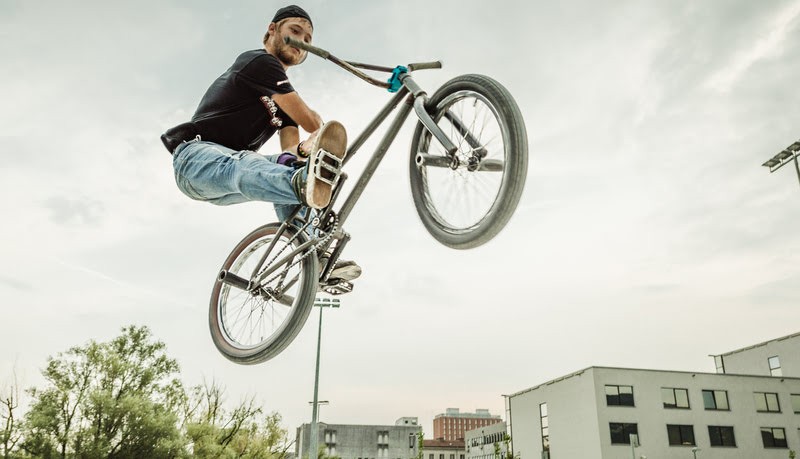BMX bikes are a type of bicycle that has gained immense popularity among adventure-seekers and enthusiasts over the years.
These bikes are specially designed for extreme off-road cycling, stunts, and tricks, making them a versatile and exciting way to get around.
With their lightweight frames, rugged construction, and maneuverability, BMX bikes offer riders of all skill levels an unparalleled experience on the road, track, or trail.
Whether you’re a seasoned pro or a beginner looking to explore the world of extreme cycling, a BMX bike is an excellent choice for anyone looking to add an extra kick to their performance.
Overview of BMX Bikes
In this article, we’ll explore the different types of BMX bikes, their components and features, and how to choose the right BMX bike for your needs. So, let’s get started.
What Does BMX Stand for
BMX bikes are a type of bicycle that is specifically designed for off-road cycling, stunts, and racing.
The acronym “BMX” stands for Bicycle Moto Cross, which reflects the sport’s origins in motocross racing. BMX bikes have smaller frames and wheels than standard bicycles, which makes them more agile and easier to handle.
They also have a single-speed drivetrain, with a relatively small chainring and a freewheel mechanism that allows the rider to coast.
BMX bikes are typically made of lightweight, durable materials such as aluminum or chromoly steel and are designed to withstand the rigors of extreme cycling.
They are commonly used for racing, freestyle riding, and dirt jumping and are a popular choice among both amateur and professional riders.
A Brief History of BMX Biking from Backyard Tracks to Olympic Glory
BMX biking originated in Southern California in the late 1960s and early 1970s when kids began racing their bikes on dirt tracks. These tracks were modeled after motocross courses, and the sport became known as Bicycle MotoCross or BMX.
The first organized BMX race took place in 1971 in California, and the sport quickly spread across the United States and eventually around the world.
In the early years, BMX racing was the primary focus of the sport, with riders competing on dirt tracks filled with jumps and obstacles. But soon, riders began to experiment with new tricks and styles, leading to the development of freestyle BMX.
Freestyle BMX bike involves performing tricks on various surfaces, including streets, parks, dirt jumps, and flatlands.
It became an important part of the sport in the 1980s, with riders like Bob Haro and Mat Hoffman leading the way in developing new tricks and pushing the boundaries of what was possible on a BMX bike.
Today, BMX biking is a popular sport and activity enjoyed by riders of all ages and skill levels. It is an Olympic sport, with both racing and freestyle events included in the games.
BMX bikes have also evolved, with specialized designs and components that cater to specific aspects of the sport.
Types of BMX Bikes
BMX bikes come in a variety of types, each designed for a specific purpose. Here’s an overview of the different types of BMX bikes and their ideal usage:
Cruiser Bike
BMX cruiser bikes are designed for cruising around town, commuting, and leisure riding. They have larger 24-inch or 26-inch wheels, a longer frame, and a more comfortable riding position.
Dirt Jumper Bike
Dirt jumper BMX bikes are designed for jumping and stunting on dirt tracks, dirt jumps, and BMX parks. They are built with a reinforced frame, a longer top head tube, and a taller seat post to provide better balance and control in the air.
Flatland Bike
Flatland BMX bikes are designed for performing tricks and stunts on flat surfaces, such as parking lots and indoor venues. They have a shorter frame, a smaller gear ratio, and no brakes.
Freestyle BMX Bikes
Freestyle BMX bikes are specifically designed for performing tricks and stunts. They are built to withstand the impact of jumps and falls, with a sturdy frame, reinforced wheels, and durable components.
Freestyle bikes come in several varieties, including street, park, and dirt jump bikes.
Pusher Bikes
Pusher BMX Bikes are small BMX bikes with 12-inch wheels that are designed for toddlers and small children. They are perfect for learning balance and coordination and are not suitable for riding on rough terrains.
Pegs & Pegless Bikes
Pegs and pegless BMX bikes are designed for grinding and sliding on rails, ledges, and curbs. Pegs are small metal cylinders that attach to the bike’s axles and allow the rider to perform grinds and slides.
Race Bikes
Race BMX bikes are designed for competitive racing on dirt tracks, with features such as a lightweight frame, narrow tires, and a larger gear ratio for faster speeds. They come in different sizes to fit riders of different ages and heights.
Street Bikes
Street BMX bikes are designed for riding on streets, skateparks, and other urban settings. They are durable and lightweight and feature a short frame, small gearing, and thick tires for better traction and stability.
Transition Bike
Transition BMX bikes are designed for riding in transition-style skateparks, bowls, and halfpipes. They have a longer top tube, a higher seat post, and larger wheels for better stability.
Touring Bikes
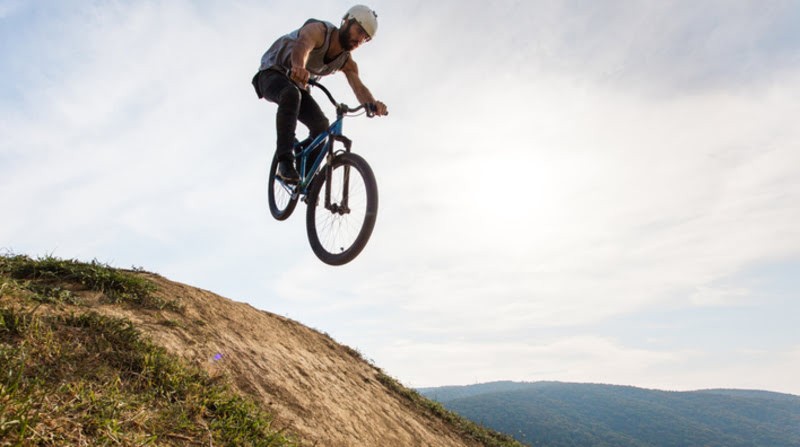
Touring BMX bikes are designed for long-distance travel and backpacking. They have larger 26-inch or 29-inch wheels, a longer frame, and are built to carry heavy loads.
Note: People also use other BMX bikes, but the ones discussed above are the most famous and important ones.
7 Essential Parts of a BMX Bike
BMX bikes are made up of several essential components that work together to create a high-performing, versatile bike suitable for a range of riding styles. Here’s a breakdown of the essential parts of a BMX bike and their functions:
1. Brakes
BMX bikes typically use a U-brake or disc brake to provide stopping power. Some models feature both front and rear brakes for maximum control and safety.
2. Drivetrain
The drivetrain is the system that transfers power from the pedals to the rear wheel. BMX bikes typically feature a single-speed drivetrain with a chain, sprocket, and rear cog.
3. Frame
The frame is the backbone of the BMX bike, providing the structural support and stability needed for aggressive riding. BMX frames are typically made from steel, aluminum, or carbon fiber and come in various shapes and sizes depending on the rider’s needs.
4. Forks
The fork is the component that attaches the front wheel to the frame. BMX forks are designed to be strong and durable, with some models featuring reinforced dropouts to handle the stresses of landing jumps.
5. Handlebars
BMX handlebars are designed to provide the rider with maximum control and maneuverability. They come in different shapes and sizes, with some models featuring crossbars for added strength.
6. Tires
BMX tires come in a range of sizes and tread patterns, depending on the rider’s preferences and the terrain they ride on. Tires with deeper treads are ideal for off-road riding, while smoother tires provide better speed and maneuverability on the pavement.
7. Wheels
BMX wheels are typically 20 inches in diameter, with lightweight rims and sturdy spokes. They are designed to withstand the impacts of jumps and tricks while providing excellent traction and control.
Enhance Your Riding Experience with these Must-Have BMX Bike Accessories
BMX biking is a high-energy sport that requires the right gear and accessories to stay safe and perform at your best. Here is an overview of some common BMX bike accessories and their importance:
Grips
Grips provide traction and comfort for your hands while riding. Look for grips that fit comfortably and securely onto your handlebars.
Helmet
A helmet is the most important accessory for BMX biking, as it protects your head from injury in case of a fall or accident. Look for a helmet that is certified by safety standards and fits comfortably.
Protective Gear
Other protective gear, such as knee pads, elbow pads, and gloves, can also help prevent injury while riding. These accessories are especially important for riders who are learning new tricks or riding in skateparks.
Pegs
Pegs are metal cylinders that attach to the axles of BMX bikes and are used for performing tricks, such as grinding on rails or ledges. Look for pegs that are made of durable materials and fit securely onto your bike.
What makes a BMX different from a regular bike?
Here is a table summarizing the main differences between BMX bikes and regular bikes:
| Specification | BMX Bikes | Regular Bikes |
| Frame | Smaller, more compact frames made of stronger materials | Larger, more elongated frames made of lighter materials |
| Wheels | Smaller wheels with wider, more aggressive tires | Larger wheels with narrower tires are designed for speed |
| Brake | Rear brake only for better control during tricks | Front and rear brakes for better stopping power |
| Handlebars | Wider and taller handlebars for better control and leverage | Narrower handlebars for a more aerodynamic riding position |
| Pedals | Wide, flat pedals with more grip for better control | Narrower pedals designed for speed |
| Design | Lightweight and agile for better maneuverability during stunts | Designed for speed and long-distance riding |
| Use | Often used for freestyle riding and racing | Used for commuting, road cycling, and other types of recreational riding |
Pros of BMX Bikes
1. Affordable
BMX bikes are generally less expensive than other types of bikes, making them accessible to riders on a budget.
2. Durability
BMX bikes are built to withstand the rigors of riding on rough terrain, jumping, and performing tricks.
3. Lightweight
BMX bikes are typically lightweight, making them easy to maneuver and control during jumps and stunts.
4. Easy to Maintain
BMX bikes are relatively easy to maintain and repair, with simple components that are easy to replace if damaged.
5. Versatile
BMX bikes are versatile and can be used for various types of riding, such as racing, freestyle, and street riding.
Cons of BMX Bikes
1. Limited to Short Distances
BMX bikes are designed for short distances and aren’t ideal for long-distance riding or commuting.
2. Limited Gear Options
BMX bikes typically have limited gear options, with most bikes having only one gear, which can make it difficult to tackle hills or ride at high speeds.
3. Rough Ride
The smaller wheels and tires on BMX bikes can make for a rough ride on bumpy or uneven terrain.
4. Limited Seating Options
Most BMX bikes do not have a comfortable seat, as the design of the bike is focused on performance rather than comfort.
5. Not Suitable for All Riders
BMX bikes are designed for a specific type of riding and may not be suitable for all riders, particularly those who are looking for a bike for commuting or long-distance riding.
Who Should Ride BMX Bikes
Riders interested in freestyle, racing, or street riding
BMX bikes are designed for these types of riding and are ideal for riders interested in performing tricks, jumping, and riding on rough terrain.
Beginners
BMX bikes are often a good choice for beginners, as they are relatively affordable and easy to maintain.
Children and teenagers
BMX bikes come in various sizes and are often a popular choice for children and teenagers who are interested in riding bikes.
Is BMX Biking for Everyone? Exploring Who Should Avoid Riding BMX Bikes
Long-distance riders or commuters
BMX bikes are not designed for long-distance riding or commuting, as they typically have limited gear options and are not as comfortable as other types of bikes.
Tall or heavy riders
BMX bikes are designed for smaller riders and may not be suitable for riders who are tall or heavy.
Bikers seeking an exercise machine
BMX bikes are not designed for this type of riding, as they are designed for performance rather than comfort or efficiency.
Riders with physical impairments or mobility issues
BMX bikes can be rough on the body and may not be suitable for riders with physical limitations or injuries.
Comprehensive tips to maintain your BMX Bike
Maintaining your BMX bike is crucial to ensure it lasts longer and performs optimally. Proper maintenance can also help prevent accidents and injuries while riding. Here are some basic maintenance techniques for BMX bikes:
1. Keep it clean
Regularly clean your bike to prevent dirt, grime, and moisture buildup. Use a bike-specific cleaner and a soft-bristled brush to scrub the frame, wheels, and other components. Dry off the bike completely after cleaning.
2. Check the tires
Ensure that your tires are properly inflated and not worn out. Check for any cuts or punctures in the tires and replace them if necessary.
3. Lubricate moving parts
Apply lubricant to the chain, derailleur, and other moving parts to ensure smooth operation. Use bike-specific lubricants for best results.
4. Tighten loose parts
Check for loose nuts, bolts, and screws and tighten them as needed. Loose parts can affect the bike’s stability and lead to accidents.
5. Check the brakes
Ensure that your brakes are functioning properly and adjust them if necessary. Test the brakes before every ride to ensure they are working.
6. Store it properly
Store your bike in a dry and cool place, away from direct sunlight and moisture.
If you experience any issues with your BMX bike, here are some troubleshooting tips:
- If the brakes are not working, check the brake pads for wear and adjust the cables or replace them if needed.
- If the chain keeps slipping, check the chain tension and adjust it as needed. Replace the chain or the cassette if they are worn out.
- If the pedals are loose, tighten them using a pedal wrench.
- If the wheels are wobbly, check the spokes for tension and true the wheel if necessary.
Pro Riding Techniques and Tips to Master Your BMX Skills
Riding a BMX bike is a thrilling experience, but it also requires some specific techniques to master. Here are some riding techniques for BMX bikes:
1. Pedaling
Pedaling is the most basic technique in BMX riding. You should pedal continuously to maintain momentum and control your speed. Try to keep your pedals level and use your dominant foot to push down harder while pedaling.
2. Jumping
Jumping is an essential skill for BMX riders. To jump, you need to gain some speed and then crouch down as you approach the jump. As you reach the top of the jump, extend your legs and push down on the pedals to lift the bike off the ground.
3. Bunny Hop
Bunny hopping is a technique that helps you get over obstacles such as curbs or rocks. To bunny hop, crouch down, and then jump up, lifting both wheels off the ground at the same time. This technique requires a lot of practice and timing.
4. Manuals
Manuals are when you lift the front wheel of your BMX bike off the ground and ride on your rear wheel only. This technique is useful for navigating over small obstacles or maintaining speed through a section of the track. To perform a manual, shift your weight back and lift the front wheel off the ground.
5. Barspins
Barspins is a trick that involves spinning the handlebars of your BMX bike while in mid-air. To perform a barspin, jump off a ramp or curb, and as you’re in the air, use one hand to spin the handlebars while holding onto the grips with the other hand.
6. Grinds
Grinds involve sliding your bike along a surface such as a rail or a ledge. To grind, approach the rail or ledge at an angle and hop onto it, balancing on your pegs. Use your body to maintain balance and control.
Remember, these techniques require practice, so start with the basics and gradually work your way up to more advanced techniques. Always wear appropriate safety gear and ride within your abilities.
A Thrilling Guide to BMX Competitions and Events Worldwide
BMX competitions and events are a great way for riders to showcase their skills, learn from other riders, and connect with the BMX community. Here’s an overview of different types of BMX competitions and events:
BMX Racing
BMX racing involves riders competing on a track with jumps, obstacles, and turns. Races are typically divided into age groups and skill levels, with riders competing to cross the finish line first.
Freestyle BMX
Freestyle BMX events involve riders performing stunts and tricks on various obstacles, such as ramps, rails, and boxes. Competitions are judged based on the difficulty and creativity of the tricks performed.
BMX Flatland
BMX flatland involves riders performing tricks on a flat surface, such as a parking lot or concrete floor. Riders use their bikes as a platform for various tricks, such as spinning the handlebars or balancing on one wheel.
To participate in BMX competitions and events, riders need to register in advance and pay an entry fee. Riders may also need to provide proof of their BMX skills and experience to be eligible to compete.
Attending BMX events is essential for networking and skill-building within the BMX community. Riders can connect with other riders, learn new tricks and techniques, and gain exposure to sponsors and industry professionals.
Attending BMX events can also provide riders with inspiration and motivation to push their skills to the next level.
The Ultimate Buyer’s Guide to Choose the Perfect Ride for Your Riding Style
When buying a BMX bike, it’s important to consider your individual needs and preferences to ensure you get the right bike for you. Here are some tips to help you determine the best BMX bike for your needs and preferences:
1. Determine Your Riding Style
The type of BMX bike you need depends on your riding style. If you plan to ride mainly on the street, you’ll want a bike designed for freestyle riding, while racing BMX bikes are designed for BMX track racing. Determine your riding style before making a purchase.
2. Consider Your Skill Level
Your skill level also plays a role in determining the type of BMX bike you need. If you’re a beginner, you may want a bike that is more forgiving and easier to handle, while advanced riders may prefer a bike with more advanced features and components.
3. BMX Bikes Sizes Matter
Be sure to choose a bike that fits your height and weight. A bike that is too small or too large can be uncomfortable to ride and can impact your control and balance.
4. Look for Quality Components
Look for BMX bikes with quality components such as chromoly frames, sealed bearings, and double-walled rims. These components will provide better durability and performance.
5. Research and Compare
Do your research and compare different brands and models before making a purchase. Look for reviews and ratings from other riders and consider the reputation of the brand.
6. Test Ride
If you’re purchasing a bike in-store, take the bike for a test ride to ensure it feels comfortable and performs well.
7. Check the Return Policy
Be sure to check the return policy before making a purchase to ensure you can return the bike if it’s not a good fit for you.
8. Consider Customizing
If you can’t find a BMX bike that fits your needs and preferences, consider customizing a bike to your specifications. This can be more expensive but can ensure you get the perfect bike for you.
Top 7 BMX Bikes to Own in Today’s Market
If you’re a BMX enthusiast, you know that having the right bike can make all the difference when it comes to performance, durability, and overall enjoyment of the sport.
But with so many options available on the market, it can be tough to choose the right bike for your needs. Whether you’re a competitive racer, a freestyle trickster, or just looking for a reliable bike for cruising around town, I’ve got you covered.
In this section, I’ve compiled a list of the seven best BMX bikes available today based on factors such as quality, features, and customer reviews. So sit back, grab your helmet, and get ready to discover your next favorite BMX bike.
1. Sunday Primer 16
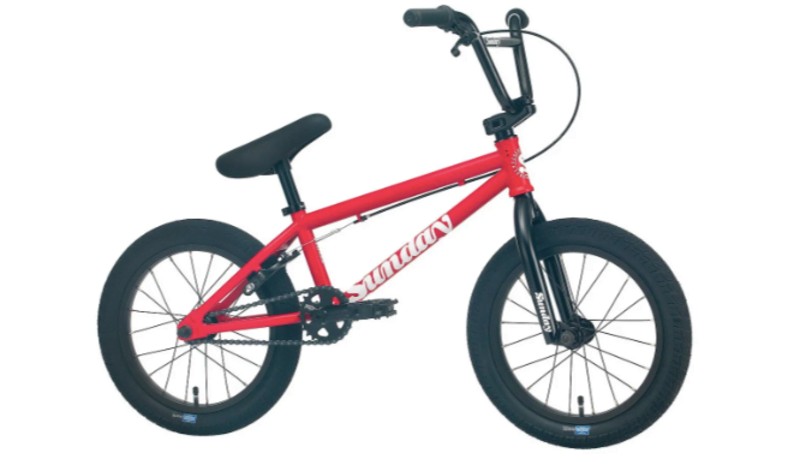
The Sunday Primer 16 is a top-of-the-line BMX bike that’s designed for riders who are looking to take their skills to the next level. This bike is packed with high-quality features that make it ideal for both beginner and experienced riders alike.
One of the most impressive things about the Sunday Primer 16 is its lightweight frame, which is made from high-tensile steel.
This gives the bike exceptional durability and strength while still keeping it light enough for riders to easily maneuver and perform tricks.
The Sunday Primer 16 also features a premium drivetrain system, with a cassette hub in the rear wheel and a sealed mid-bottom bracket. This provides the bike with maximum power transfer and smooth, efficient pedaling.
The bike’s tires are also worth noting, as they come with a knobby tread pattern that’s perfect for off-road riding. This allows riders to tackle any terrain with ease, whether they’re hitting the dirt jumps or shredding the local skatepark riding.
Perhaps most importantly, the Sunday Primer 16 is designed with safety in mind. It comes equipped with U-brakes that provide reliable stopping power, ensuring that riders can stop quickly and safely when needed.
2. GT Pro Performer 29
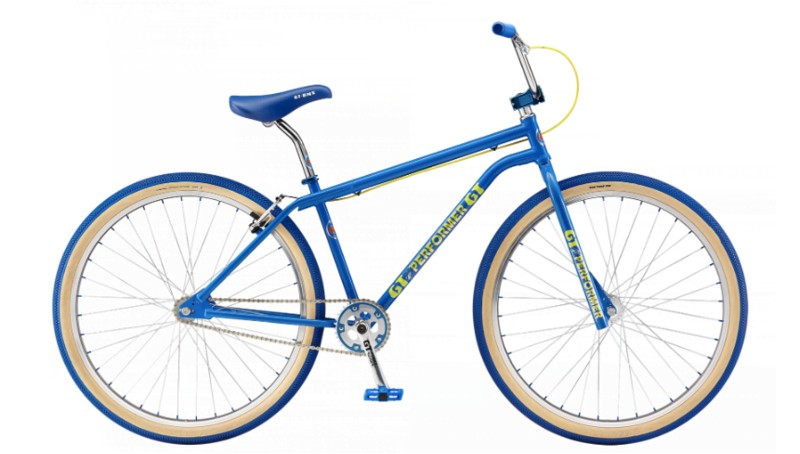
The GT Pro Performer 29 is a true masterpiece in the world of BMX bikes. Designed with old-school aesthetics and modern technology, this bike is a perfect combination of classic and contemporary styles.
One of the most striking features of this bike is its effortless ride quality, making long-distance rides a breeze for riders of all levels.
With its super-laced hubs and chromoly frame tubing, the Pro Performer provides unbeatable strength and durability on any terrain.
The throwback graphics and designs from GT’s 1986 line make it an appealing choice for riders who want to show off their unique style.
The Pro Performer’s tall frame is perfect for riders up to 6”6’, making it a great option for taller individuals who may have trouble finding a suitable bike. Its beautiful colors and themes are also an attractive drawcard that makes heads turn wherever you go.
In terms of performance, the 29″ version’s geometry is impressive, and the ride quality is both smooth and fast. The upgraded cranks are lauded for their high quality, while the stock components are more than sufficient for most riders.
Additionally, the Pro Performer is built to wheelie, making it an excellent choice for riders who love to show off their skills.
While some critics may suggest that this bike is more form than function, the majority of riders see it as an excellent value for the price paid. The only downside is that a few components may be of average quality, but this does not detract from the overall appeal of the Pro Performer.
3. Verde Cadet
If you’re a BMX rider who’s under five feet tall, then the Verde Cadet is the perfect bike for you. This bike is designed specifically to accommodate smaller riders, with a unique low-standover bike frame that makes it easy to maneuver and control.
Despite its small size, the Verde Cadet is still packed with excellent features that make it a great choice for any rider.
The bike’s 20-inch wheels and modern geometry provide exceptional performance and maneuverability, while the special low-standover frame ensures that smaller riders can easily handle the bike.
One of the standout features of the Verde Cadet is its affordability. This is a high-quality BMX bike that’s priced to be accessible to riders on a budget, without sacrificing performance or durability.
The bike is also designed to be skatepark-ready, with a rugged construction that can handle even the toughest tricks and terrain.
All in all, if you’re looking for a high-quality BMX bike that’s affordable, easy to handle, and designed with smaller riders in mind, then the Verde Cadet is an excellent choice.
4. Taj Fairdale
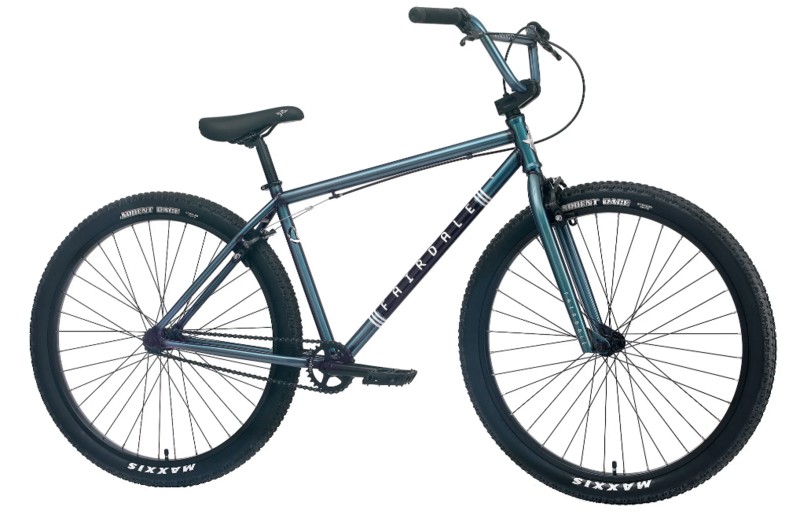
If you’re looking for a versatile, indestructible BMX bike that’s perfect for commuting, cruising, and even a bit of stunting, then the Taj from Fairdale is the bike for you.
Designed by BMX legend Taj Mihelich, this bike has a cult following among college students, urban office workers, and former skatepark stars alike.
One of the standout features of the Taj is its indestructible construction. Made from premium materials and built to last, this bike can handle anything you throw at it. Whether you’re commuting through the city, cruising around town, or hitting up the skatepark, the Taj is up for the challenge.
Another great feature of the Taj is its 27.5-inch wheels, which make it the perfect size for most riders. With a fuss-free design and premium components, this bike is easy to ride and maintain, making it the ideal choice for anyone who wants a reliable, low-maintenance BMX bike.
While the Taj is designed to be a one-size-fits-all bike, it may not be comfortable for riders who are under 5-foot-8 or above 6-foot-3 when it comes to stunting. However, for cruising and commuting, the Taj is a perfect fit for nearly everyone.
5. SE Racing So Cal Flyer 24
SE Racing’s So Cal Flyer 24 is the perfect bike for those looking to join the urban “bike life” movement without sacrificing comfort or style. With 24-inch wheels, this bike is more accessible for smaller or younger riders and can easily fit in smaller vehicles.
But don’t let its smaller size fool you; the So Cal Flyer 24 is a fully tricked-out ride with features similar to SE’s iconic Big Ripper and Blocks Flyer models.
Actually, the So Cal Flyer 24 is built with a lightweight aluminum frame, making it easy to maneuver and control. It also features a Landing Gear fork and double-wall rims, giving the rider a smooth ride and added durability.
But the real standout feature of the So Cal Flyer 24 is its design. SE Racing has a long history of creating bikes with eye-catching designs that stand out from the crowd, and the So Cal Flyer 24 is no exception.
The monochrome black colorway is sleek and understated, with just enough pop to turn heads. The retro-inspired SE Racing graphics are a nod to the brand’s rich history and add an extra layer of style to an already impressive bike.
6. WeThePeople Audio 22
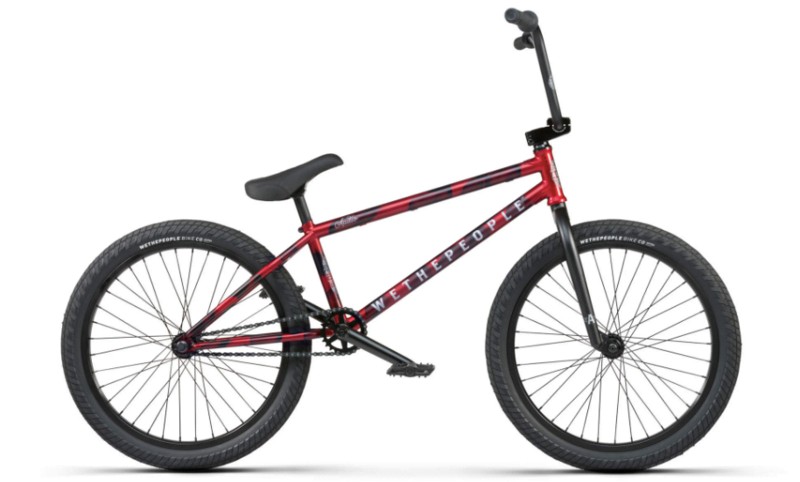
The WeThePeople Audio 22 is a game-changer in the world of BMX bikes, offering a unique and innovative approach to BMX bike sizes. With its 22-inch wheels, it provides a stable and predictable ride, making it the perfect choice for riders who want to get back into biking or those who want to try something new.
Designed to fit riders between 5-foot-8 and 6-foot-2, the Audio is well-equipped and built with premium materials to ensure durability and reliability.
It’s the ideal choice for riders who want a comfortable ride that won’t take a toll on their bodies, making it the perfect choice for cruising and commuting.
Basically, the WeThePeople Audio 22 is a perfect example of a 22-inch BMX bike that provides riders with the benefits of both worlds.
But what really sets the Audio apart from other 22-inch bikes is the level of detail and thought that went into designing its components.
From the Saltplus “Pro” level crankset to the Eclat “Slash” pedals, every part of this bike is well-crafted and engineered for maximum performance.
Plus, with its sleek and stylish design, the Audio is sure to turn heads at the skatepark or on the streets. So if you’re looking for a bike that’s perfect for cruising, commuting, or even hitting the skatepark, the WeThePeople Audio 22 is the way to go.
7. Redline MX Series
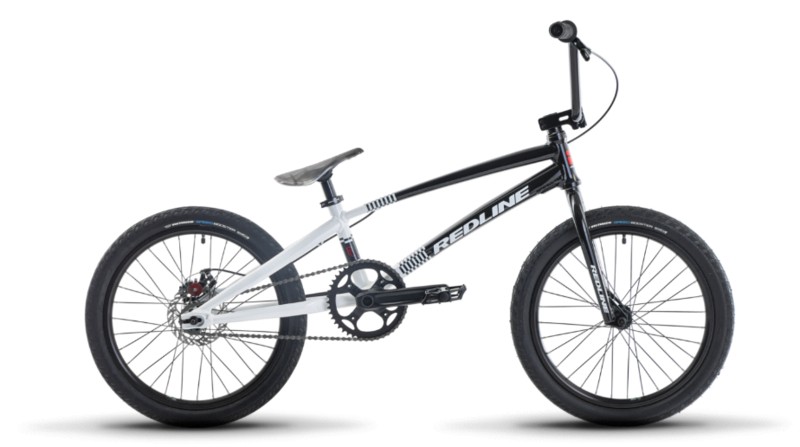
The Redline MX Series is a high-quality BMX bike that’s perfect for riders who are looking for a durable, versatile, and high-performance bike that can handle any terrain.
Whether you’re a beginner rider or an experienced BMX pro, the Redline MX Series is an excellent choice.
One of the standout features of the Redline MX Series is its lightweight aluminum frame, which provides exceptional durability and strength while still keeping the bike light and maneuverable. This makes it easy for riders to perform tricks and navigate through tight spaces.
The bike’s drivetrain is also outstanding, featuring a 3-piece alloy crankset and a sealed mid-bottom bracket. This provides the bike with maximum power transfer and smooth pedaling, allowing riders to tackle any terrain with ease.
The Redline MX Series is also designed with safety in mind. It comes equipped with powerful V-brakes that provide reliable stopping power, ensuring that riders can stop quickly and safely when needed.
The bike’s tires are another standout feature, with a knobby tread pattern that’s perfect for off-road riding. This allows riders to take on any terrain, whether they’re hitting the dirt jumps or shredding the local skatepark.
If you’re looking for a high-quality BMX bike that can handle anything you throw at it, the Redline MX Series is an excellent choice.
Summing Up — BMX Bikes
BMX bikes offer a thrilling and rewarding riding experience, but it’s important to approach it with the right knowledge and equipment.
By understanding the different types of BMX bikes, components, and riding techniques, you can choose the right bike for your needs and stay safe on the trails and in the skatepark.
BMX Bikes — Frequently Asked Questions
How often should I maintain my BMX bike?
Regular maintenance is important to keep your BMX bike in good condition. It’s recommended to check and maintain your bike before and after each ride and perform a more thorough cleaning and inspection every few months.
How much do BMX bikes usually cost?
The cost of BMX bikes can vary greatly depending on the brand, materials used, and components. Generally, you can expect to pay between $200 to $800 for a new BMX bike, with some high-end models costing over $1000.
Related:

